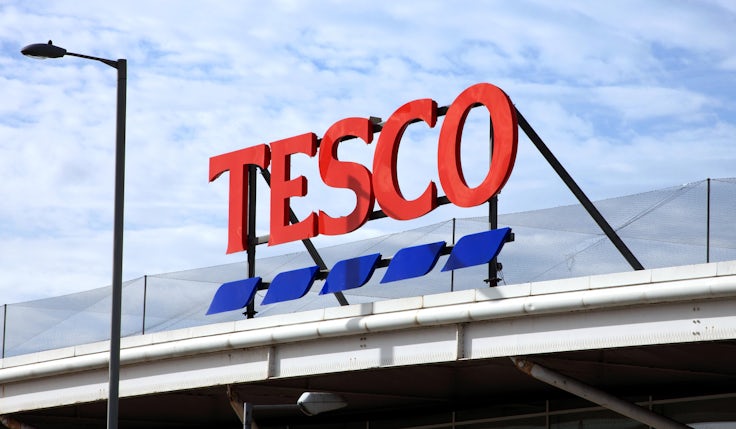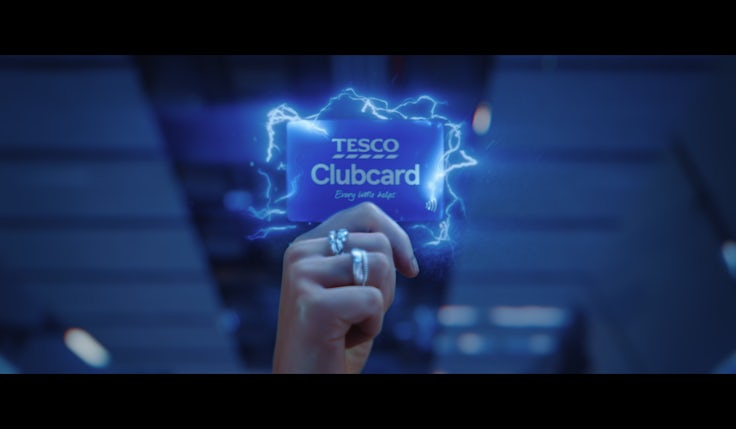Tesco renews focus on premium products under four new ‘strategic priorities’
The grocer’s strategic priorities for the year ahead include providing ‘magnetic value’ for customers, continuing to evolve its Clubcard proposition, convenience and driving cost-savings.
 Having launched a number of initiatives designed to compete on low prices, Tesco has now promised to “leverage the strength” of its Finest range, as part of a renewed focus on premium products.
Having launched a number of initiatives designed to compete on low prices, Tesco has now promised to “leverage the strength” of its Finest range, as part of a renewed focus on premium products.
According to CEO Ken Murphy, the strategic shift has come after noticing elevated demand for products in the Finest range at certain times of the week.
The supermarket is therefore looking to innovate new product solutions for that occasion, extend the range across new categories and enable deeper distribution so more customers can access the products.
“Customers want fantastically competitive prices on their everyday items and we address that through ‘Aldi Price Match’ and our ‘Low Everyday Prices’,” Murphy told Marketing Week on a call with press today (6 October).
“That means they can securely and reliably shop us for everything at really great value, all the time. What we’ve also noticed though is that at certain times of the week – and it’s been elevated by the working from home phenomenon and by the pandemic – people want to have a more extravagant or luxurious experience, and they want grocers to provide them with that.”
Value has been a particular point of focus for most major UK supermarkets over the past 18 months, with Asda, Morrisons and Sainsbury’s among those cutting prices to compete.Sainsbury’s hails Aldi price match success as value push pays off
Tesco has undertaken a similar mission, launching its Aldi Price Match campaign in March 2020 and recording its highest value perception in a decade as a result. The line has now been expanded to approximately 650 products. Similarly, Low Everyday Prices has been relaunched on 1,600 products.
Murphy added that value is “much broader” than just price, however, and is viewed by Tesco as the intersection of price, quality and sustainability.
“We want to make high quality, healthy and sustainably-sourced food available and affordable to everyone, and in doing so, remove reasons for customers to want or need to shop anywhere else,” said Murphy.
Providing “magnetic value” for customers is one of four new strategic priorities laid out in Tesco’s half-year financial results. The pillars are designed to deliver increased customer satisfaction and grow or maintain UK market share, generating between £1.4bn and £1.8bn retail free cash flow per year.
People want to have a more extravagant or luxurious experience, and they want grocers to provide them with that.
Ken Murphy, Tesco
The other three strategy points revolve around the continued evolution of Tesco’s loyalty proposition Clubcard – becoming as convenient as possible through online shopping, a focus on Tesco Express and rapid delivery services and delivering further cost savings.
Over the first six months of the year, Tesco posted a total adjusted retail operating profit of £1.4bn, 16.6% ahead of the same period last year. Online like-for-like sales were up by 2.3%, equating to a 74.1% rise compared to pre-pandemic figures from two years ago.
The retailer has credited its Aldi Price Match strategy, its introduction of Clubcard Prices in Express stores and more effective digital platforms for its strong performance. It has increased its full year profit expectations as a result, forecasting an adjusted retail operating profit of between £2.5bn and £2.6bn.
“We’ve had a strong six months; sales and profit have grown ahead of expectations and we’ve outperformed the market,” Murphy said, adding that the company’s reach and resilient supply chain have been key assets.
“I’m really pleased with our progress as we increased customer satisfaction and grew market share, leading to a strong financial performance.”
‘A powerful virtuous circle’
According to Tesco, more than 20 million households now have a Clubcard and there are 6.6 million users of the retailer’s app.
As part of its strategic focus on the loyalty scheme, Tesco has promised to use this advantage to provide a “much richer” experience for customers, personalising their offer to a greater degree and responding to their changing needs in real time.
“They will be able to choose how, when and where they shop with us – across our full range of products and services – and how they earn and use the rewards they accumulate,” Murphy explained.
“We will use all of the assets we have – and critically, Clubcard – to ensure that the more customers use Tesco, the more useful Tesco becomes to them – a powerful virtuous circle.”
The grocer has also revealed plans to ramp up sales of ads to supplier brands, utilising its growing insight from Clubcard data, as part of a drive to increase its non-retail income streams.Tesco Mobile tightens link to the masterbrand with ‘Clubcard Prices’ launch
Suppliers will be offered the opportunity to market their products in more targeted ways, such as advertising on Tesco’s grocery home shopping website, or by offering a tailored range of additional products directly to specific customers.
“It’s really about trying to match customers who are interested and engaged with suppliers which have products that meet that demand in a much more meaningful way than would otherwise be the case,” Murphy said.
“And also to make sure that we understand the nuances where a product might theoretically be okay for a customer, but a variant of that product would be even better.”
Tesco also wants to engage with the supplier much earlier in its innovation cycle, using its own customer insights and actively engaged customers to give feedback to suppliers about products sooner in the development process, so their chance of success when they come to market is higher.
“As we know, about 70% of product innovation doesn’t work and that’s hugely wasteful for both the supplier and for the retailer,” Murphy added.







